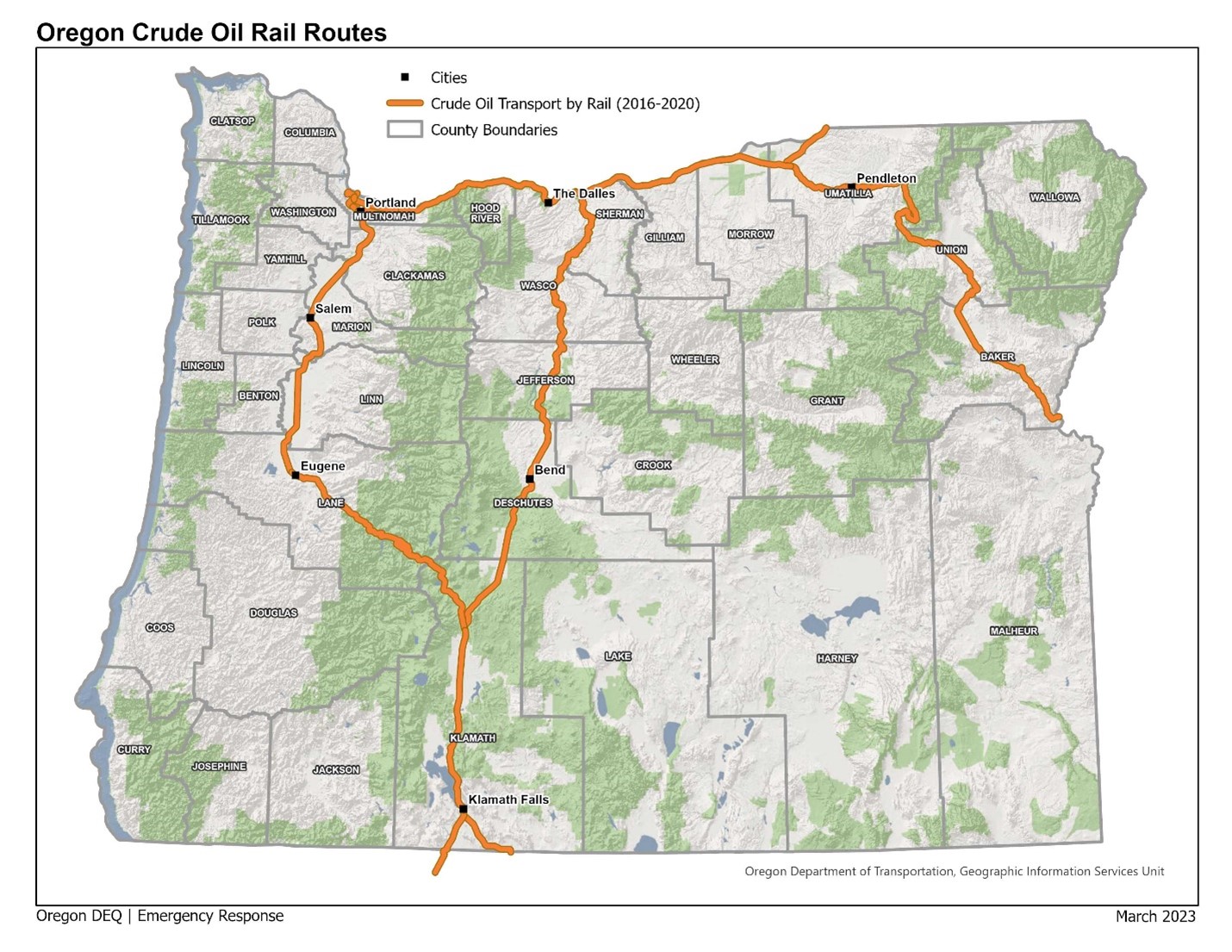Over 380 million gallons of oil come into Oregon each year by rail, posing a risk to the environments and communities it travels through. DEQ requires certain railroads to prepare plans in case of a spill, so they respond quickly and effectively.
How DEQ regulates oil transportation
In 2019, the Oregon Legislature passed
House Bill 2209, giving DEQ the authority to create rules requiring railroads transporting oil to prepare spill response plans.
These rules apply to railroads considered to be “high hazard rail" because they are within a quarter mile of waters of the state and have trains traveling over them with:
- More than 20 tank cars loaded with oil in a continuous block,
- or, 35 tank cars loaded with oil distributed through the length of a train.
In Oregon, the definition of oil includes gasoline, crude oil, bitumen, synthetic crude oil, natural gas well condensate, fuel oil, diesel oil, lubricating oil, sludge, oil refuse and any other petroleum related product; and liquefied natural gas.
The routes of high hazard rail in Oregon are shown in orange on the map below.

Just like facilities, DEQ's first goal is to prevent a spill. However, if a spill does occur railroads will have DEQ- approved and tested response plans as tools for emergency response.
Status of spill response plans
Since the
approval of the rules in May 2021, DEQ has been working with BNSF Railway and Union Pacific Railroad, which own all of the high hazard rail areas in Oregon.
Both BNSF and Union Pacific have submitted plans to DEQ. DEQ high hazard rail planning staff have reviewed and approved those plans. The plans were also reviewed by Tribes along the high hazard rail routes as well as the Oregon Department of Fish and Wildlife, Oregon State Fire Marshal and Oregon Department of Land Conservation and Development. DEQ has begun the first rounds of testing these plans through spill drills and exercises.
Additionally, the High Hazard Rail program is working on creating geographic response plans along the rail corridors. These plans are meant to address geographically specific areas and identify ahead of time, important resources that must be protected in the event of a spill. DEQ intends to work with communities in these areas to develop the geographic response plans.
Resources
The Washington Department of Ecology leads a state program of spill prevention, preparedness and response for
oil transportation, including oil moved by rail.
 Sign up to receive email updates on the High Hazard Rail Program at DEQ
Sign up to receive email updates on the High Hazard Rail Program at DEQ